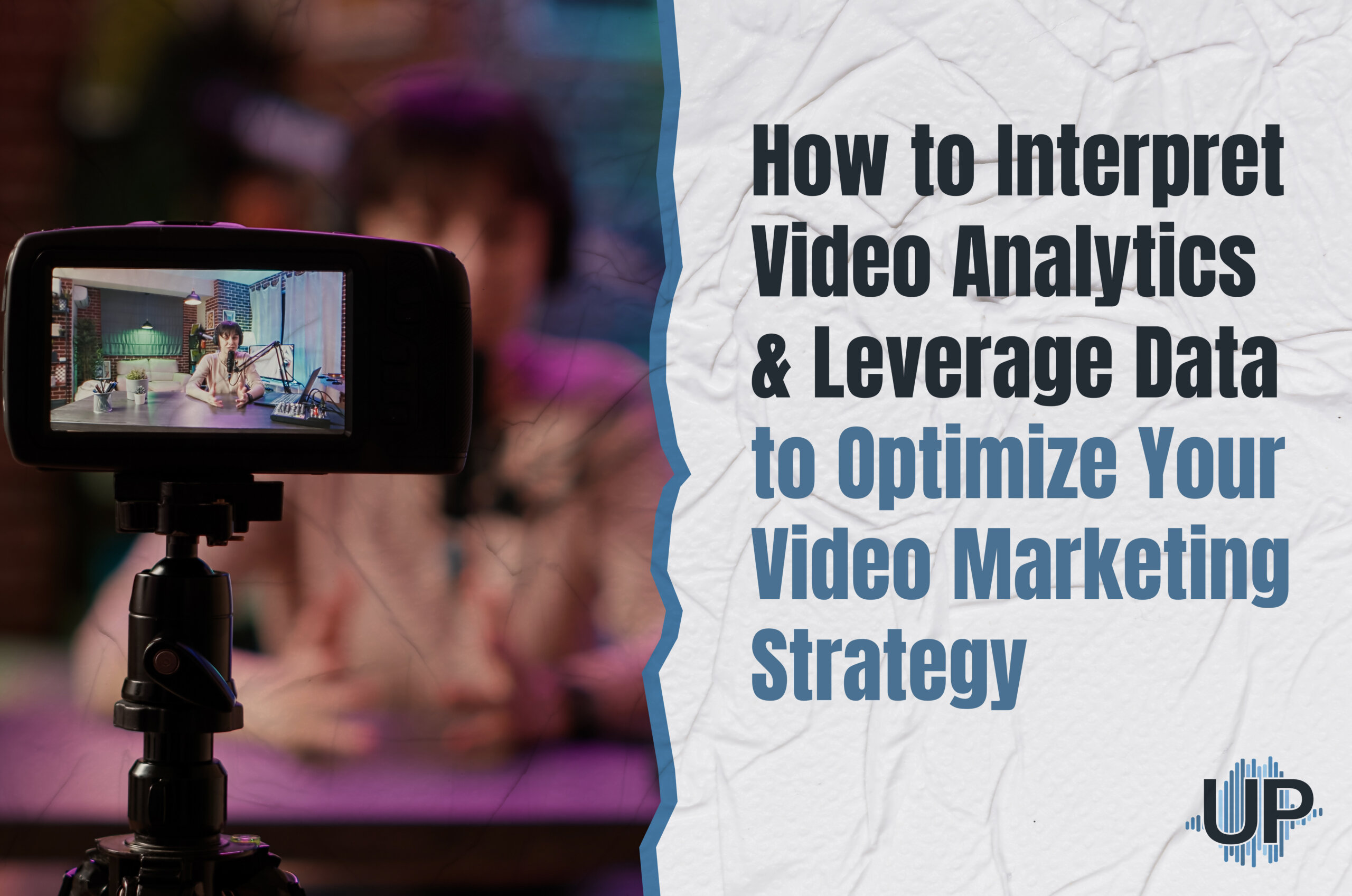
Video marketing has become one of the most powerful tools for businesses looking to engage with their audience and boost brand visibility. As the demand for video content continues to grow, marketers must not only produce compelling videos but also understand how to measure their impact. This is where video analytics in marketing plays a critical role. By leveraging data gathered from viewer behavior, interaction rates, and performance metrics, businesses can fine-tune their video marketing strategies to achieve optimal results. Video analytics provides insights into what resonates with audiences, which types of content drive the most engagement, and how effectively videos are converting viewers into customers. By interpreting this data, marketers can make informed decisions about future video content, adjust their approach to maximize return on investment, and continually improve their campaigns. In today’s competitive landscape, understanding and using video analytics in marketing is essential for businesses looking to stay ahead.
Understanding Key Video Analytics Metrics
To effectively optimize your video marketing strategy, it's essential to understand the key metrics that video analytics provide. These metrics include views, watch time, engagement rate, and audience retention, among others. Views measure the number of times your video has been watched, but watch time goes deeper, revealing how long viewers are staying engaged. Engagement rate looks at how viewers are interacting with your video—through likes, shares, comments, or clicks on calls to action—giving insight into how well your content resonates with your audience. Audience retention is a crucial metric that shows where viewers drop off in your video, helping you identify any weak points in your content that may need adjustment. By interpreting these key video analytics metrics, marketers can gain a clear understanding of what works and what doesn’t, allowing them to refine their approach and create more effective, data-driven video marketing strategies.
Views and View Duration
When analyzing video performance, views and view duration are two of the most fundamental metrics to consider. While views simply track the number of times your video has been watched, view duration offers deeper insights into how long viewers stay engaged with your content. A high number of views combined with a short view duration may indicate that your video is attracting attention but failing to retain interest. Understanding this balance helps marketers pinpoint where they might need to improve content structure or messaging to keep viewers engaged for longer, ultimately optimizing the video’s effectiveness in delivering its intended message.
Engagement Metrics (Likes, Comments, Shares)
Engagement metrics such as likes, comments, and shares are vital indicators of how well your video content resonates with your audience. These interactions go beyond passive viewing, showing that viewers are actively responding to and amplifying your message. A high number of likes signals positive reception, while comments can provide valuable feedback or spark conversations that enhance brand visibility. Shares, on the other hand, are particularly powerful, as they extend your video’s reach to a broader audience, driving organic growth. By closely monitoring these engagement metrics, marketers can gain insights into the emotional and social impact of their content, allowing them to create more targeted and engaging videos that foster deeper audience connections.
Audience Demographics (Age, Gender, Location)
Audience demographics, including age, gender, and location, provide crucial insights into who is watching your video content and how effectively your message is reaching your target audience. These metrics help marketers understand whether their videos are resonating with the right groups or if adjustments are needed to better align with the intended audience. For instance, if your video is attracting viewers outside your target age range or location, you may need to reconsider your messaging or distribution channels. Similarly, knowing the gender breakdown of your audience can inform content style and tone, ensuring it speaks directly to the needs and interests of your viewers. By interpreting audience demographic data, marketers can better tailor their video marketing strategies to ensure the right message reaches the right people, maximizing relevance and impact.
Click-Through Rates (CTRs)
Click-through rates (CTRs) are a key metric in video marketing that measure how effectively your video content drives viewers to take action, such as clicking a link or following a call to action. A high CTR indicates that your video is not only capturing attention but also compelling viewers to engage further, whether by visiting a website, signing up for a service, or exploring additional content. For example, a promotional video for a product may include a call to action prompting viewers to click through to a landing page for more details or to make a purchase. Monitoring CTRs allows marketers to gauge the effectiveness of their video’s call to action and make adjustments to optimize future videos. By focusing on improving CTRs, businesses can turn passive viewers into active participants, driving conversions and enhancing the overall performance of their video marketing efforts.
Conversion Rates and ROI
Conversion rates and return on investment (ROI) are critical metrics that directly measure the success of your video marketing efforts in achieving business goals. Conversion rates track how many viewers take the desired action after watching your video, such as making a purchase, signing up for a service, or filling out a form. A high conversion rate means that your video content is effectively persuading viewers to move down the sales funnel. ROI, on the other hand, calculates the financial return generated from your video marketing investment. By comparing the cost of producing and promoting the video to the revenue or value generated, ROI helps marketers assess the overall profitability of their campaigns. Understanding these metrics allows businesses to refine their video strategies, focusing on content that drives both engagement and measurable outcomes, ensuring their investment is paying off in tangible results.
Mastering Video Analytics and Using Data to Optimize Your Video Marketing Strategy
Mastering video analytics is essential for transforming raw data into actionable insights that can elevate your video marketing strategy. By thoroughly analyzing metrics such as views, engagement, audience demographics, and conversion rates, marketers can uncover patterns that reveal what content resonates best with their audience. For example, if data shows that videos with certain topics or formats retain viewers longer and lead to more conversions, future content can be tailored accordingly. Similarly, if specific demographic groups respond more positively to certain types of videos, marketers can refine their messaging to better align with that audience. This continuous process of interpreting video analytics allows businesses to fine-tune their strategies, ensuring that each video not only reaches the right people but also maximizes engagement and drives meaningful outcomes. Ultimately, using data to optimize your video marketing strategy enables you to make informed decisions that amplify impact and achieve measurable success.
Interpreting Video Analytics
Interpreting video analytics is the key to turning raw data into valuable insights that guide strategic decisions. It involves looking beyond surface-level metrics like views or likes and digging deeper into data that reveals audience behavior and engagement patterns. For example, interpreting audience retention metrics can help identify specific moments where viewers lose interest, allowing you to refine content to keep them engaged for longer periods. Similarly, analyzing click-through rates (CTRs) and conversion data provides insight into how effectively your video drives viewers to take action, offering clues on how to optimize calls to action. Demographic data, such as age, gender, and location, helps in tailoring content to better connect with your target audience. Interpreting these analytics not only enhances your understanding of how videos perform but also informs the adjustments needed to create more engaging, relevant, and impactful video marketing campaigns. With the right interpretation, video analytics can become a powerful tool for continuous improvement and success.
Leveraging Data to Optimize Video Marketing Strategy
Leveraging data to optimize your video marketing strategy allows you to make informed decisions that drive better results. By analyzing key metrics such as viewer engagement, audience demographics, and conversion rates, you can identify what’s working and where improvements are needed. For example, if your data shows that certain types of videos generate higher engagement among a specific demographic, you can focus more on creating similar content tailored to that audience. Additionally, if your video’s call to action is resulting in low click-through rates, the data can guide you to refine the messaging or positioning of the CTA. By continuously monitoring and acting on the insights from video analytics, marketers can adjust their strategies in real-time, optimizing content for maximum reach, engagement, and conversion. This data-driven approach ensures that each video you produce is not only aligned with audience preferences but also strategically positioned to meet your marketing objectives.
Understanding Audience Preferences
Understanding audience preferences is essential for creating video content that resonates and drives engagement. By analyzing data such as watch time, engagement metrics, and audience demographics, marketers can gain insight into the types of content their viewers prefer. For example, if your audience tends to engage more with educational or how-to videos, focusing on producing more of that style will likely keep them coming back. Additionally, demographic data can reveal if certain age groups or locations prefer specific topics or formats, allowing you to tailor content to those preferences. Tools like audience surveys and feedback, combined with video analytics, further refine this understanding. For more insights into how to align content with audience interests, especially in B2B settings, check out this resource on targeting your podcast audience: Target Audience for B2B Podcasts. By continuously adapting to audience preferences, your video marketing strategy will remain relevant and impactful.
Optimizing Video Performance
Optimizing video performance is all about fine-tuning your content and strategy to achieve maximum engagement and conversions. This involves using data-driven insights from video analytics to adjust elements such as video length, format, and messaging. For instance, if your audience retention data shows viewers dropping off early, you might consider revising your video structure to capture attention in the first few seconds. Additionally, ensuring your video content is optimized for search engines and discoverability can greatly enhance its reach. Just as with podcasts, applying SEO strategies to your videos—such as keyword optimization, compelling titles, and engaging descriptions—can drive more traffic and boost visibility. For more SEO tips that can benefit both video and podcast content, check out this guide on 7 Podcast SEO Strategies. With continuous optimization, your videos will be more likely to connect with your audience and achieve your marketing goals.
A/B Testing: The Science of Video Optimization
A/B testing is a powerful method for optimizing video performance by comparing different versions of your content to see which resonates better with your audience. By testing variables such as video length, thumbnails, headlines, or calls to action, marketers can determine what elements drive higher engagement and conversion rates. For example, you might test two versions of the same video—one with a different introduction or call to action—to identify which approach leads to more clicks or longer view durations. A/B testing helps remove guesswork from your video marketing strategy, providing concrete data to inform decisions. This iterative process ensures that each adjustment is backed by measurable outcomes, ultimately leading to more refined and effective video content. By embracing A/B testing, businesses can continuously optimize their videos to better align with audience preferences and marketing objectives.
Targeting & Distribution Strategies
Effective targeting and distribution strategies are essential for ensuring your videos reach the right audience at the right time. By understanding your audience’s preferences and behavior, you can tailor your video content to specific segments and distribute it through channels where it will have the most impact. For instance, if your data shows that a particular age group or demographic engages more on social media platforms like Instagram or TikTok, focusing your distribution efforts there can lead to higher engagement. Similarly, for B2B audiences, sharing videos through LinkedIn or embedding them in email marketing campaigns might yield better results. Additionally, targeting can go beyond demographics to include interests, behaviors, and even geographic locations, ensuring your message is relevant and timely. Crafting a well-thought-out distribution plan based on targeting data ensures your videos are not only seen but also resonate with the viewers who matter most to your business goals.
Enhancing Engagement and Conversions
Enhancing engagement and conversions requires a strategic approach that leverages data from video analytics in marketing. By closely analyzing viewer behavior—such as where audiences engage most and when they drop off—marketers can refine their content to better hold attention and inspire action. For example, tweaking the call to action or restructuring the video based on these insights can significantly improve conversion rates. Additionally, interactive elements like polls, clickable links, or personalized content can boost viewer engagement. Using these analytics-driven strategies allows businesses to create more compelling videos that resonate with their target audience. For businesses looking to further enhance their video marketing efforts and generate high-quality leads, explore services designed to boost engagement and conversions, such as B2B Lead Generation Services. Data-driven optimizations ensure that your videos not only captivate viewers but also drive measurable results.
Tools and Platforms for Video Analytics
To effectively interpret and act on video analytics, utilizing the right tools and platforms is essential. Many video hosting platforms, such as YouTube and Vimeo, offer built-in analytics that provide insights into viewer behavior, including watch time, engagement, and audience demographics. These platforms allow marketers to track how their content performs in real-time and identify areas for improvement. Additionally, advanced tools like Google Analytics or HubSpot can be integrated with your video marketing efforts to measure the impact on website traffic and conversions, offering a broader view of how your video content supports your overall marketing goals. Social media platforms such as Facebook and Instagram also offer native video analytics, helping marketers gauge engagement and optimize content for different audiences. With the right mix of tools, businesses can gain a comprehensive understanding of their video performance, leading to data-driven decisions that enhance video marketing strategies.
Conclusion
Incorporating video analytics into your marketing strategy is no longer optional—it's essential for maximizing the effectiveness of your video content. By understanding and interpreting key metrics such as views, engagement, and audience demographics, marketers can refine their content to better resonate with their target audience and drive meaningful results. Tools and platforms provide the insights needed to make data-driven decisions, from enhancing engagement to boosting conversion rates. By continuously analyzing and optimizing your videos, you can ensure that each piece of content not only captivates viewers but also contributes to your broader business objectives. Embrace the power of video analytics to transform your marketing strategy and create impactful, results-driven campaigns. For further insights on enhancing your marketing efforts, consider exploring B2B lead generation services.


